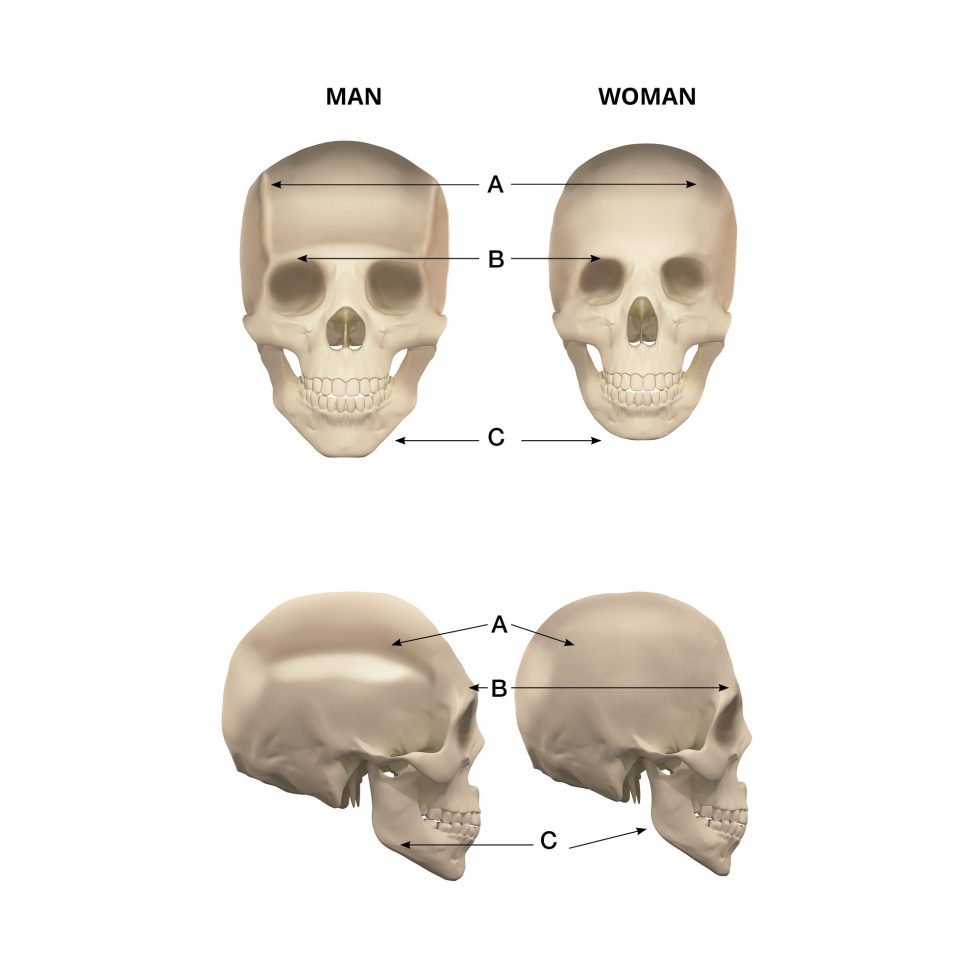Facial feminization surgery
The face is a reflection of both our personality and our sexuality. Facial feminization surgery includes a series of procedures aimed at achieving more harmonious and feminine features. These may range from adding volume to the lips or cheeks, to reshaping the chin and jawline, or repositioning the hairline to create a narrower forehead. Facial feminization surgeries are ideal for patients undergoing gender affirmation, as altering these facial characteristics can be a key part of the process, helping their identity align with their appearance.
FACIAL FEMINIZATION SURGERY (FFS) IN MADRID AND BARCELONA
At IM GENDER, we are specialists in facial feminization surgery. We know that FFS surgery is a delicate intervention that can generate many doubts and concerns in patients who undergo it. Certain facial features—such as the jawline, hairline, and brow area—clearly reflect sex-based differences. Facial surgery allows you to attain an image that aligns with your identity. That is why in our gender reassignment clinic located in Madrid and Barcelona, we adapt to your needs.
We understand that each patient is unique, and for this reason, we offer a personalized approach in every intervention we undertake. Our team of professionals will guide and advise you every step of the way, for giving you the confidence and assurance to feel comfortable in your own skin.
TYPES OF FACIAL FEMINIZATION SURGERY
Request an appointment
Results After Facial Surgery
Facial feminization may involve multiple surgeries and aesthetic treatments to achieve the desired outcome, and final results may not be fully visible until up to a year after the procedure. At IM GENDER, our surgeons will listen to your expectations and preferences in order to recommend the best treatments tailored to your needs.
We also understand how important it is to see real before-and-after cases before making a decision. In these images, you can view the results of patients treated at our clinic to help you visualize the potential outcomes and support a more confident decision.
What is facial feminization surgery?
FFS is a wide range of procedures to change facial features. As a result, after the facial gender affirming surgery, the patient achieves a softening and more feminine appearance. These procedures can be carried out in combination or on a specific area of your face, with minimally visible scars.
The face is usually divided into three parts: the upper, middle and lower third. On each of them, different operations may be carried out. Furthermore, other techniques exist such as facelifts, which are performed on the entire face, or treatments using aesthetic medicine which also contribute to feminizing your face. There are also other techniques to enhance facial appearance, such as facelift surgery and aesthetic medicine treatments, which can further contribute to facial feminization.

In the upper third of a female face, thickening of the bones above the eyebrows is a feature that gives a tougher appearance and expression. The hairline may also be a masculinizing feature of the face. For this reason, feminizing the upper third of your face means modifying this area. The surgery consists of modifying your forehead by reshaping the frontal sinus to soften its prominence. The same procedure can also be used to lower your hairline. This results in a smaller forehead while also enhancing your eyes.

Usually, the faces of cisgender women appear more oval, whilst a male face tends to be squarer. Therefore, often our patients also wish to change these features by modifying the angles of their chin and jaw, along with lip height through facial feminization surgery of the lower third.
Other aesthetic treatments such as lipoplasty, cheek augmentation, rhinoplasty or bichectomy will help to improve your features in the middle third while distributing facial volumes. Also, the feminization can be combined with voice surgery as well, in order to attain a higher pitched and feminine tone. The result is a voice consistent with the appearance.
Common surgeries in facial feminization surgery (FFS)
These are the most common surgeries involved in MTF facial surgery:
- Forehead feminization: This involves reducing the brow ridge and reshaping the forehead to create a smoother and more rounded appearance. The surgery may include a brow lift to elevate the eyebrows and open up the eye area.
- Rhinoplasty: Commonly known as a nose reshaping, this procedure reshapes the nose to be smaller and more refined. The goal is to achieve a nose that is harmonious with other facial features and more feminine in appearance.
- Cheek augmentation: This surgery enhances the cheeks to create a fuller, more prominent appearance. This can be achieved through implants or lipofilling, where fat is taken from another part of the body and injected into the cheeks.
- Lip lift: A lip lift shortens the space between the upper lip and the nose, giving the lips a more youthful and feminine appearance.
- Jaw reduction and thyroplasty: Jaw contouring reduces the width of the jaw and alters its shape to appear more feminine. A thyroplasty, or Adam’s apple reduction, involves shaving down the thyroid cartilage to reduce the prominence of Adam’s apple.
- Chin reduction: This procedure reduces the size and alters the shape of the chin to make it appear smaller and more pointed, which is considered more feminine.
How you prepare for facial feminization surgery
The plastic surgery team works with the patient to develop a specific plan focused on the patient’s needs and preferences. For this, you might need a CT scan that will help your doctor to obtain detailed anatomical information.
Your FFS surgeons will explain to you all you need to know about anaesthesia and adjust medication for a proper healing. He will provide you as well some advice about eating, drinking and probably quitting smoking for a season.
POSTOPERATIVE PERIOD
The postoperative period can be different depending on the type of facial feminization surgery performed, but it typically lasts from several weeks to a few months. Your surgeon will give you instructions on how to care for your incisions, such as keeping them clean and dry and avoiding any irritation or trauma to the area.
It is recommended that you sleep on your back for at least a few weeks. You can usually shower within the first week after operation, but it is important to follow your surgeon’s instructions. Be careful not to let the water pressure hit your incisions directly and avoid submerging your face in water, such as taking baths or swimming until your incisions have fully healed.
RECOVERY
During the recovery process, patients can expect some swelling, bruising, and discomfort around the treated areas. It is important to follow your surgeon’s instructions carefully to ensure proper healing.
Depending on the procedures performed, you may need to wear a compression garment or special dressings to support the surgical area and promote proper healing. Your surgeon will provide instructions on what you need to wear and for how long.
RISKS
Like any surgical procedure, MTF facial surgery carries side effects or risks of complications. These are the most common risks:
- Infection and bleeding.
- Poor wound healing.
- Suture rupture along an incision line.
- Seroma under the skin.
- Bruising and swelling.
It is important to follow your surgeon’s instructions and report any concerns or symptoms promptly. Sometimes additional surgery may be needed to improve the final result.
FAQS ABOUT FACIAL FEMINIZATION
Can I undergo FFS while taking hormone replacement therapy (HRT)?
Yes, it is generally safe to undergo FFS while taking hormone replacement therapy (HRT). In fact, many patients undergoing FFS are taking HRT as part of their transition. However, it is important to inform your surgeon about any medications you are taking, including HRT, before the procedure.
Your plastic surgeon may advise you to temporarily stop taking HRT before and after surgery to reduce the risk of blood clots. They may also adjust your medication dosage during the recovery period to ensure optimal healing.
Overall, it’s important to be open and honest with your surgeon about any medications or medical conditions you have before undergoing surgery. They can provide guidance and make any necessary adjustments to help ensure a safe and successful procedure.
How much does facial feminization surgery cost?
The cost of MTF facial surgery can be different for each patient, as not everyone has the same features or needs. Therefore, it is very important to have an initial consultation with the surgeon to evaluate which parts of the face need improvement and which surgical treatments would be most appropriate for the patient. With this assessment, we can provide you with a personalized quote for your treatment.
What are the differences between female and male craniums?
In these images, you can see the most significant differences between a female and a male skull. Many of these bone structure peculiarities can be modified by performing various facial treatments.

TESTIMONIALS FROM OUR PATIENTS
NEWS ABOUT FACIAL FEMINIZATION SURGERY
Would you like to know the price of facial feminization?
The price of facial feminization in Spain can vary from patient to patient, as not everyone requires the same facial surgery techniques. Book an appointment with our surgeon to evaluate your case.















